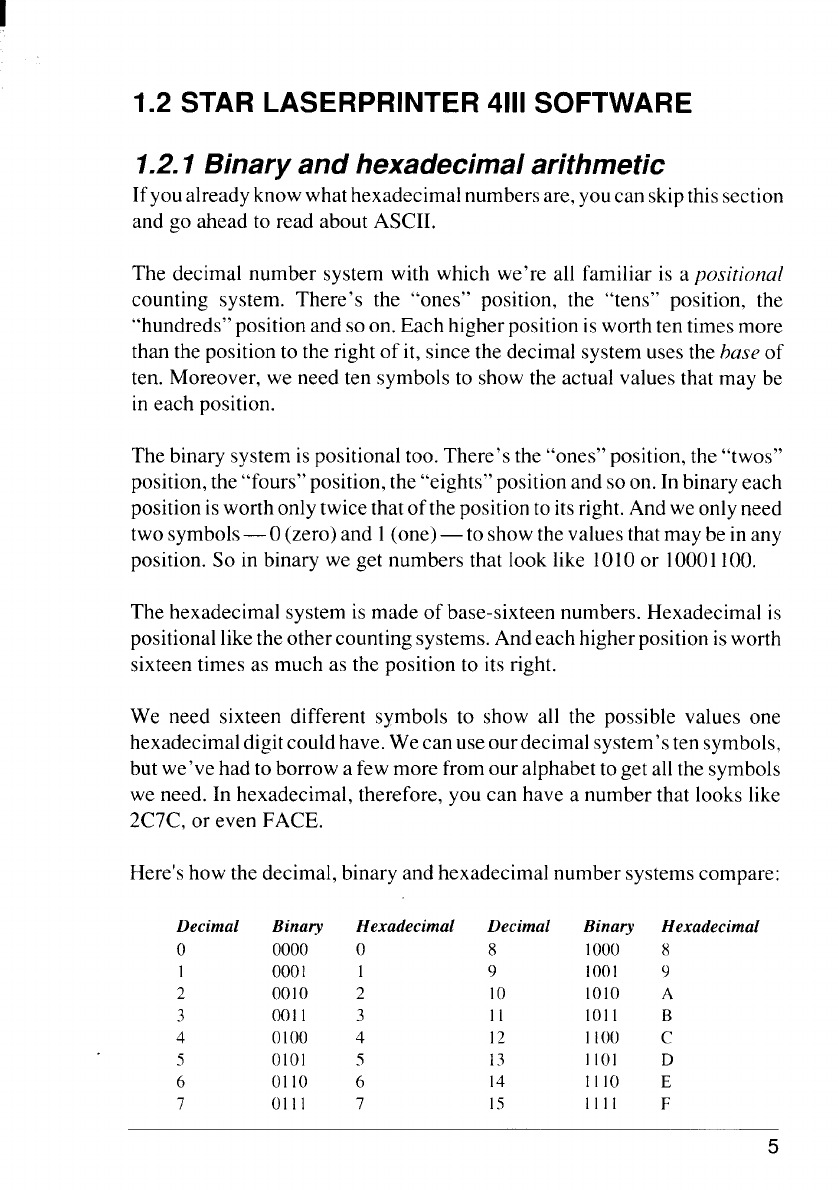
1.2 STAR LASERPRINTER 4111SOFTWARE
1.2.1 Binary and hexadecimal arithmetic
Ifyoualreadyknowwhathexadecimal numbersare, youcan skipthissection
and go ahead to read about ASCII.
The decimal number system with which we’re all familiar is a positional
counting system. There’s the “ones” position, the “tens” position, the
“hundreds” position and so on. Each higher position isworth ten timesmore
than the position to the right of it, since the decimal system uses the base of
ten. Moreover, we need ten symbols to show the actual values that may be
in each position.
The binary system is positional too. There’s the “ones” position, the “twos”
position,the“fours” position,the“eights” position and so on. In binary each
position isworth onlytwice that of the position to its right.And we onlyneed
two symbols—O (zero) and 1(one) —to show the values thatmaybe in any
position. So in binary we get numbers that look like 1010or 10001100.
The hexadecimal system is made of base-sixteen numbers. Hexadecimal is
positionallikethe other counting systems. And each higherposition isworth
sixteen times as much as the position to its right.
We need sixteen different symbols to show all the possible values one
hexadecimal digitcould have. We can use ourdecimal system’sten symbols,
but we’ve had to borrow a few more from our alphabet to get all the symbols
we need. In hexadecimal, therefore, you can have a number that looks like
2C7C, or even FACE.
Here’show the decimal, binary and hexadecimal number systems compare:
Decimal Binary
o 0000
I
0001
2
0010
3 0011
4 O1oo
5
0101
6 0110
7 01I1
Hexadecimal
o
2
3
4
5
6
7
Decimal
8
9
10
11
12
13
14
15
Binary
1000
100I
1010
lo]I
I100”
IIol
I110
1111
Hexadecimal
x
9
A
B
c
D
E
F
5


















